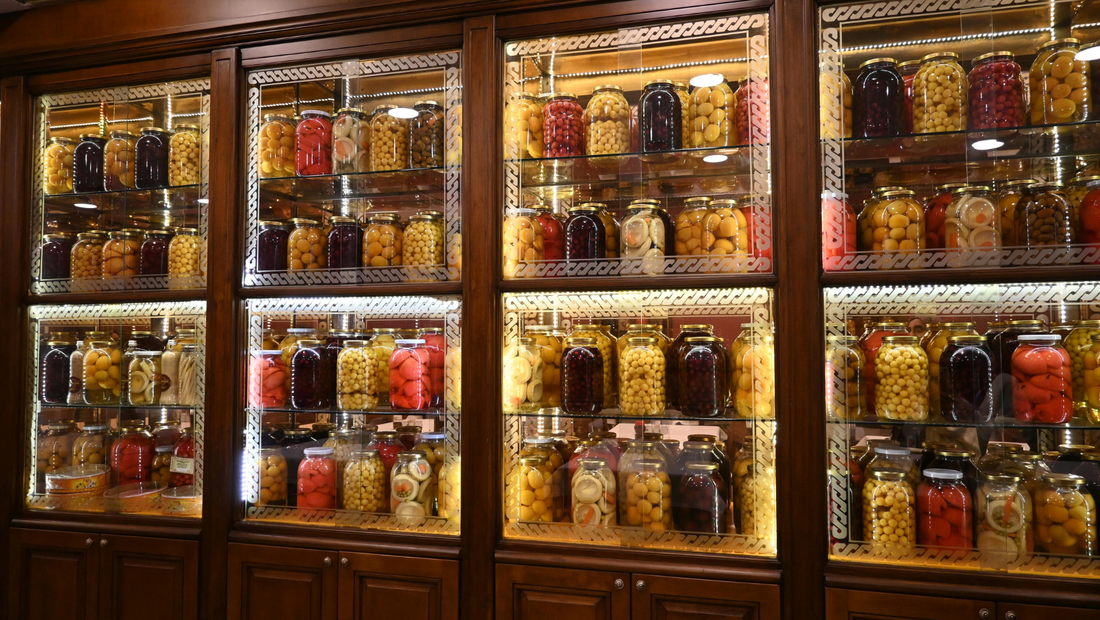
Beyond the Freezer: A Guide to Ancient Preservation Methods Farmers are Reviving
Share
The industrial food system often prioritizes speed and scale, leading many to rely heavily on massive freezing facilities or chemical additives to extend shelf life. While modern refrigeration certainly has its place, it often fails to capture the subtle flavors and nutritional complexity of freshly harvested food.
For today’s sustainable farmer, often managing diversified crops and seeking to minimize waste while maximizing flavor, the freezer is simply not enough.
In response, a quiet revolution is happening across small and mid-sized farms: the revival of ancient preservation methods. These techniques, honed over centuries, offer energy-efficient, flavor-enhancing ways to extend the harvest well into the lean seasons.
1. The Low-Tech Refrigerator: Reviving the Root Cellar
The root cellar is perhaps the most elegant and low-tech preservation solution. Before electricity, this structure, typically a basement room or underground pit, used the earth’s insulating properties to maintain a constant, cool, and humid temperature, ideal for storing specific crops.
How it works today: Modern farmers are building updated root cellars that utilize passive ventilation and natural humidity control. These aren't just for root vegetables anymore; they are crucial for:
-
Apples and Pears: Kept cool and dark, delaying ripening.
-
Potatoes and Carrots: Stored in damp sand or sawdust to maintain moisture and prevent shriveling.
-
Winter Squashes: Cured briefly and then kept cool for months of storage.
The root cellar transforms a temporary glut into a steady supply, providing local food throughout the winter without incurring massive energy costs.
2. The Power of Probiotics: Mastering Fermentation
Fermentation is the art of controlled decomposition. By using beneficial microorganisms (bacteria and yeast), farmers can stabilize, flavor, and dramatically extend the life of fresh produce.
Fermentation is particularly powerful for processing high-yield, quick-to-spoil crops, often saving surplus from the compost heap.
-
Sauerkraut and Kimchi: The most famous examples, using lactic acid bacteria to transform massive volumes of cabbage into long-lasting, probiotic-rich foods.
-
Pickles (Lacto-Fermented): Unlike vinegar pickles, lacto-fermented cucumbers and other vegetables develop a complex, tangy flavor and maintain their crispness for months.
-
Hot Sauce: Fermenting chili peppers before blending them into sauce not only preserves the harvest but deepens the spice’s complexity, creating a value-added product that commands a higher price.
This method allows the farmer to capture the flavor peak of a fleeting harvest and turn it into a premium, shelf-stable product.
3. The Elements as Allies: Air Drying and Curing
Long-term storage often means removing moisture to inhibit microbial growth. While industrial methods use large-scale dehydrators, many farmers are successfully reviving passive drying and curing techniques.
-
Air-Curing Garlic and Onions: Allowing these crops to dry naturally in an airy barn or shed for several weeks creates a protective papery outer layer, preparing them for months of ambient storage.
-
Solar Drying Herbs: Simple screens or specialized solar boxes use the sun’s energy to perfectly dry herbs and tea leaves, retaining their essential oils better than forced-air methods.
-
Dry Curing Meats: For farms raising livestock, traditional methods of curing and smoking (using salt and time) provide a way to create artisanal meats that require no refrigeration, celebrating the heritage of food craftsmanship.
By embracing these time-tested, lower-energy methods, farmers are not only increasing their resiliency and reducing waste but are also creating unique, high-quality products that resonate deeply with today’s consumer demand for natural, authentic food. This revival of ancient wisdom is, quite simply, good business.
